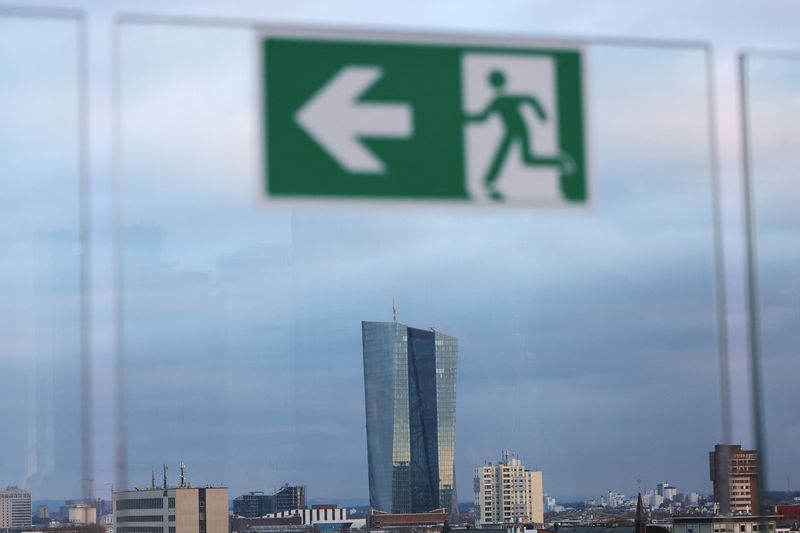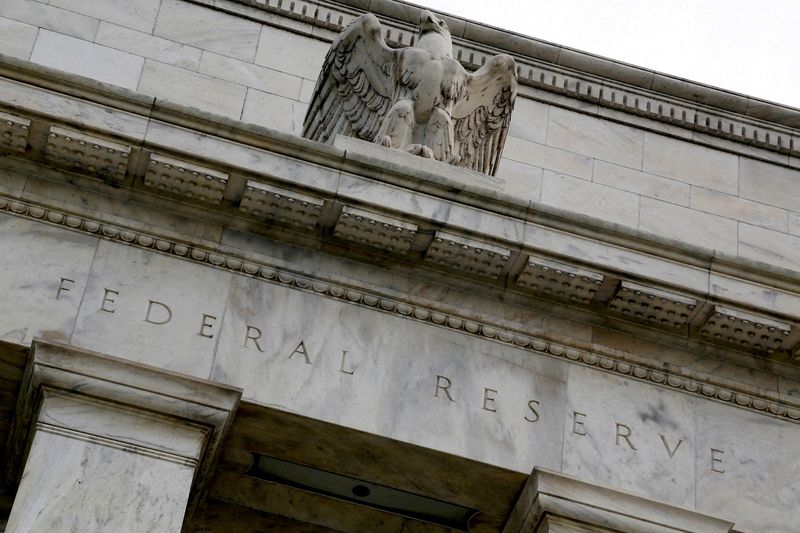LONDON (Reuters) - Major central banks have likely come to the end of what has been the most aggressive tightening cycle in decades, but some are pushing back against market expectations for rate cuts soon.
The European Central Bank (ECB) on Thursday left interest rates steady and reiterated its commitment to fighting inflation. The Bank of Canada on Wednesday said its focus was shifting to when it can start easing.
Major rate setters have hiked borrowing costs by 4,015 basis points (bps) so far this cycle, with Japan expected to end its negative interest rate policy soon.
Here's how they stand, in terms of the scale of rate hikes in this cycle.
1) UNITED STATES
The Federal Reserve held its key rate at 5.25% to 5.5% last month but January could lay bare the conundrum on whether inflation will calm enough to allow rate cuts soon.
Policymakers have pushed back against market rate cut bets. Fed Governor Christopher Waller says the United States is "within striking distance" of the 2% inflation goal but the Fed should not rush to cut rates until it is clear lower inflation will be sustained.
Still, traders price in about 130 bps of rate cuts this year, with a roughly 40% chance of a quarter point move starting in March. The next Fed rate decision is on Jan. 31.
2) NEW ZEALAND
The Reserve Bank of New Zealand held interest rates at a 15-year high of 5.5% in November and is expected to hold again at its Feb. 28 meeting before cutting as early as May.
Inflation came in below the central bank's 5% forecast in the final quarter of 2023.
3) BRITAIN
Latest data showing the annual rate of consumer price inflation sped up for the first time in 10 months in December, rising to 4.0%, has dented market expectations for an early Bank of England (BoE) rate cut.
The BoE meets on Feb. 1 and will be watched closely for a sense of timing on when it eases rates. Markets price in roughly 90 bps worth of rate cuts this year versus over 100 bps a few weeks back.
4) CANADA
The Bank of Canada on Wednesday held rates at 5% for the fourth consecutive meeting.
It said that while underlying inflation was still a concern, the bank's focus was shifting to when to cut borrowing costs rather than whether to hike again. Markets price in rate cuts in the months ahead, seeing roughly a 50% chance of a 25 bps move in April.
5) EURO ZONE
The ECB left rates unchanged at a record high on Thursday, reaffirmed its commitment to fighting inflation and giving no hint that policymakers are starting to contemplate policy easing.
Money markets continue to price in roughly 130 bps worth of rate cuts this year.
6) NORWAY
The Norges Bank, which delivered a surprise December rate hike, kept its key rate unchanged at 4.50% on Thursday, and said borrowing costs would stay on hold "for some time ahead".
Norwegian core inflation fell to a 15-month low of 5.5% in December. A strengthened Norwegian crown should soften import prices.
7) AUSTRALIA
The Reserve Bank of Australia held rates steady in December at 4.35%. Minutes of the meeting showed it had considered hiking again although markets are now pricing cuts from September.
Data in January showed business conditions and inflationary pressures were softening while Australia remains vulnerable to shaky economic conditions in China, its major trading partner.
8) SWEDEN
Swedish inflation fell to 2.3% year-on-year in December, but the core rate, which strips out energy costs, remained hot at 5.3%.
The Riksbank held rates at 4% in November and signalled it could raise them again in 2024. Economists are sceptical, however, and will be listening out for a change in tone at the Jan. 31 meeting.
9) SWITZERLAND
A strong Swiss franc, up 5% versus the euro since early 2023, has dampened price pressures in a nation that could be heading for early rate cuts.
Inflation undershot the Swiss National Bank's (SNB) 2% target for the seventh straight month in December. SNB chairman Thomas Jordan has said there is no need for more hikes from the current 1.75% level.
10) JAPAN

The Bank of Japan (BOJ) maintained its ultra-easy monetary settings on Tuesday but signalled conditions for phasing out its huge stimulus were falling into place, suggesting it could soon end negative interest rates.
Economists polled by Reuters expect the BOJ to make this move by April. Japan's core inflation slowed for a second consecutive month in December but remained above its 2% target.
